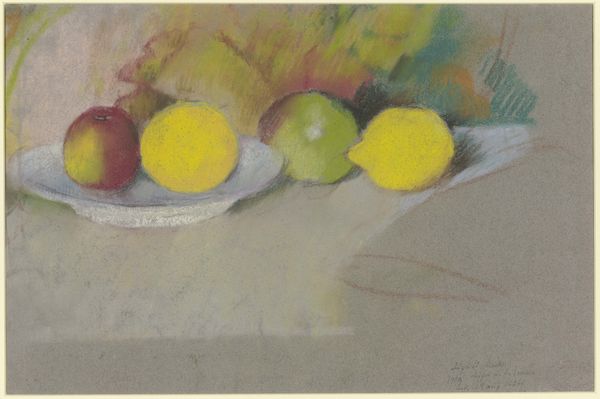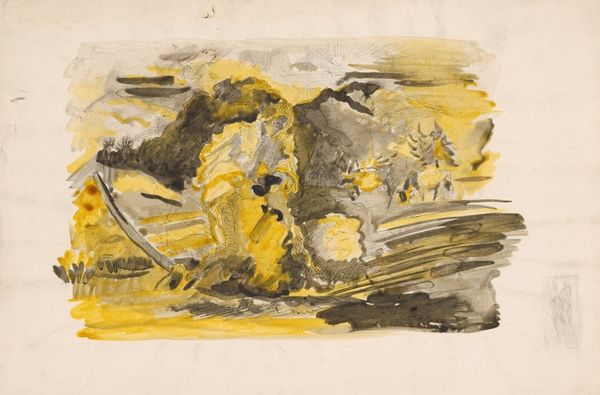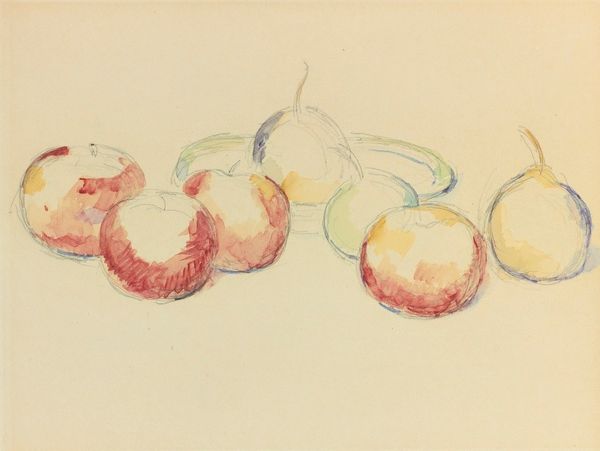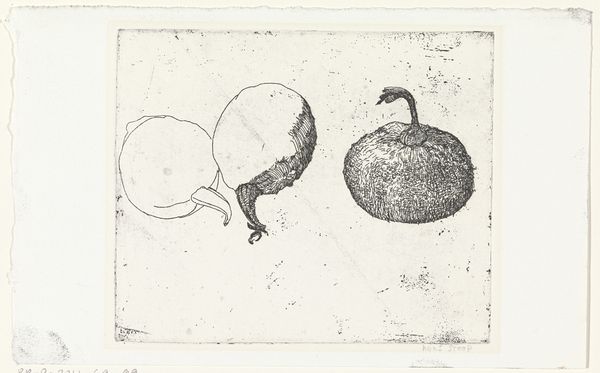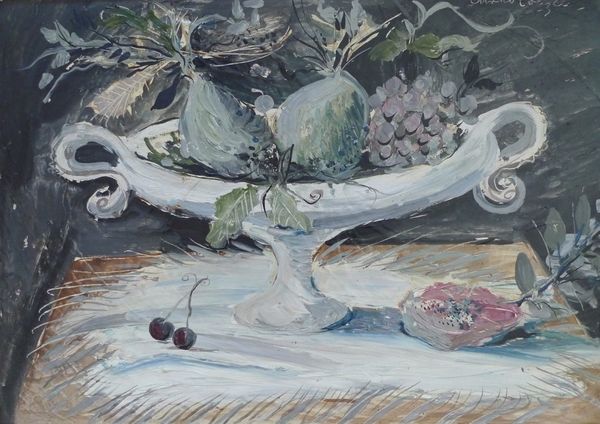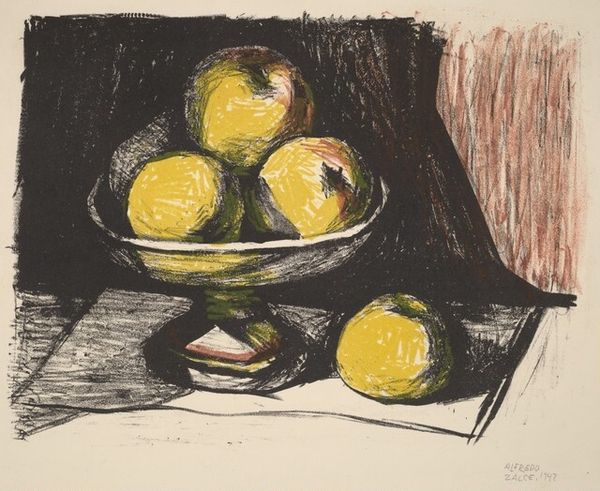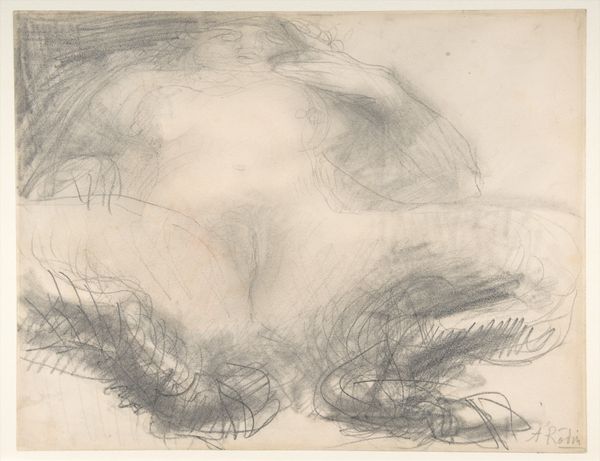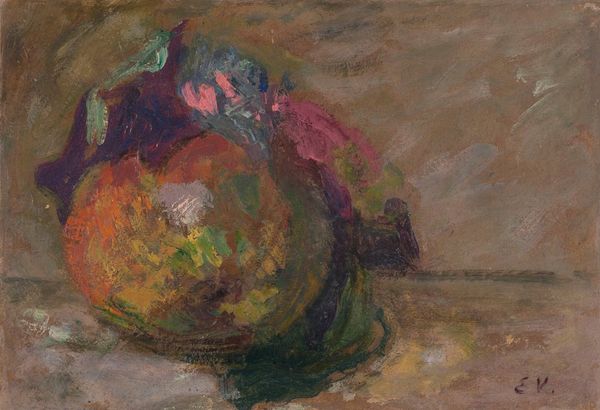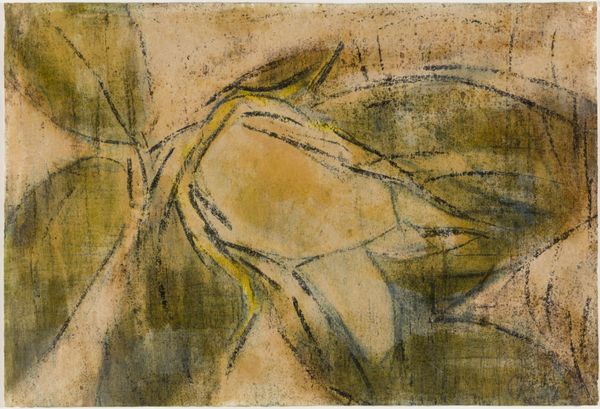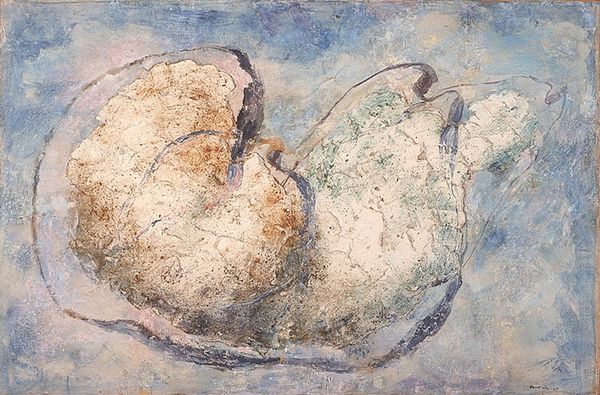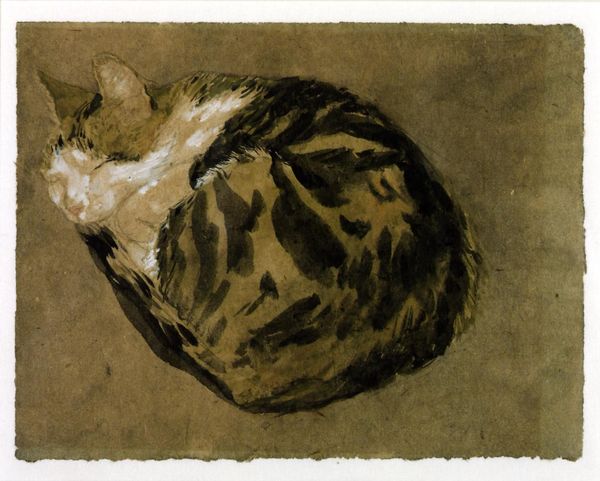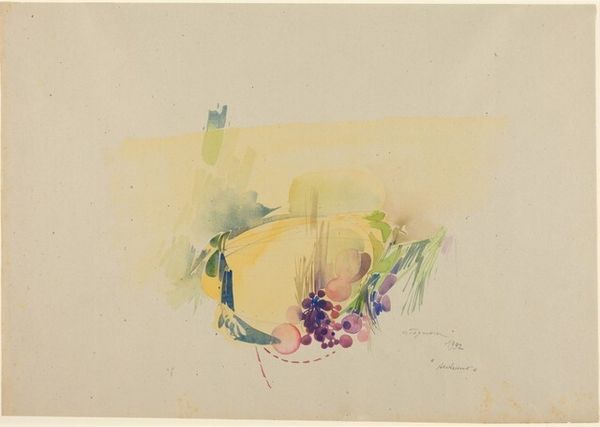
watercolor
#
landscape
#
watercolor
#
watercolour illustration
#
watercolor
#
realism
Dimensions: height 226 mm, width 317 mm
Copyright: Rijks Museum: Open Domain
Curator: Sientje Mesdag-van Houten offers us this delightful watercolor, "Kalebas," dating roughly from 1844 to 1909. What’s your immediate take? Editor: My eye is drawn to its vulnerability. There’s a bruise or wound on its side, the cool blues around it feeling almost like medicinal tones. It suggests both fragility and resilience. Curator: Absolutely. It’s as though Mesdag-van Houten is capturing not just the object, but also a fleeting moment in its existence, that slow decay… Makes me wonder what a kalebas meant for her back then... Were they commonplace or exotic, did she use it as mere model? Editor: Contextually, the late 19th century saw evolving societal roles for women artists. Often relegated to still life and domestic scenes, female artists, subtly yet radically, reframed those supposedly lesser subject matters as worthy of consideration. The single kalebas, imbued with a character of its own, perhaps resonates with feminist sentiments about singular strength amidst societal pressures. Curator: That’s beautiful. There's something very present in the brushstrokes; not tight, hyper-realistic at all. More like an echo of feeling... a certain looseness of application conveying immediacy and personality. Editor: The choice of watercolor enhances this impression of ephemeral beauty. And perhaps that deliberate unfinished aspect also invites our engagement, requiring us to complete the story of the fruit. Its unadorned presentation invites reflection on our relationship with nature, mortality and time's relentless passage. Curator: I get what you mean... the shadows seem to emphasize its solitude as much as the way the watercolor merges effortlessly on the background, fading into some indefinite non-space. This watercolor exudes contemplative quietude, despite the vibrancy of color. I can almost smell the dusty warmth of it. Editor: Mesdag-van Houten’s kalebas is far from passive. It presents an unassuming yet powerful symbol, subtly critiquing the still life genre and beckoning dialogue on beauty, decay, and resistance. Curator: Well, after looking, thinking and exchanging, this old kalebas suddenly has much to say! A worthy little fruit indeed, prompting an insightful consideration on the genre itself, wouldn't you say? Editor: Exactly. Leaving me contemplating those blurred boundaries of representation.
Comments
No comments
Be the first to comment and join the conversation on the ultimate creative platform.
